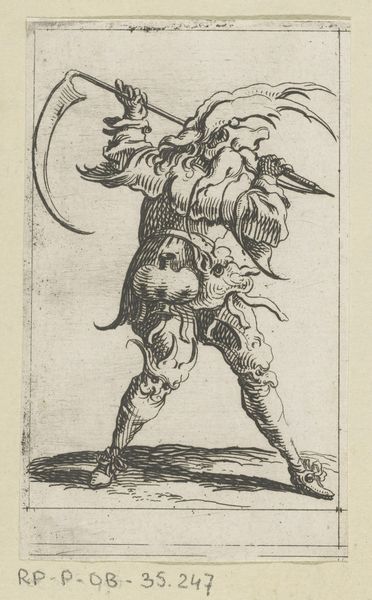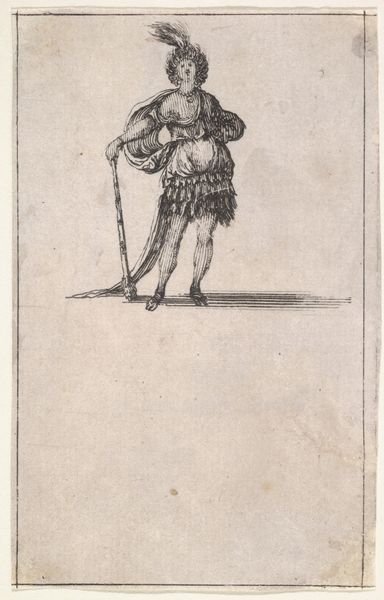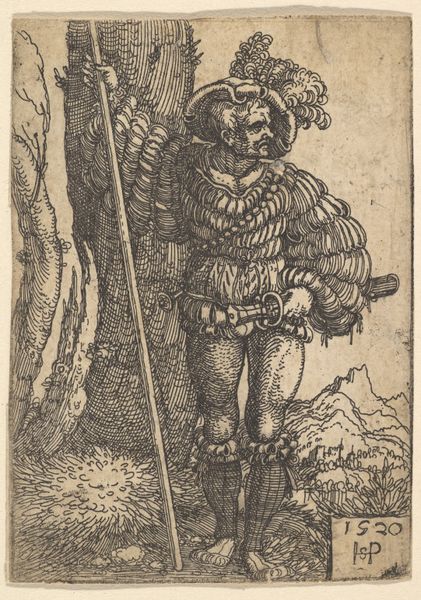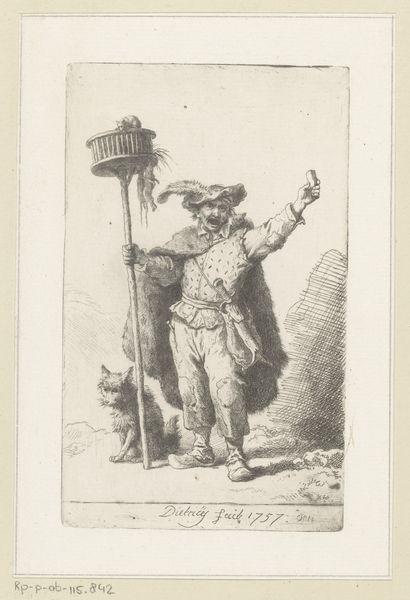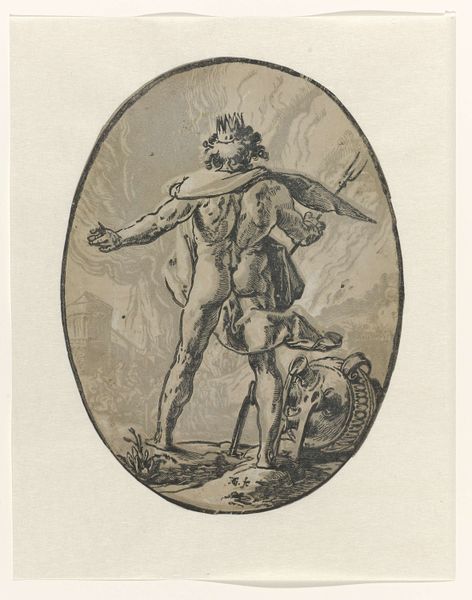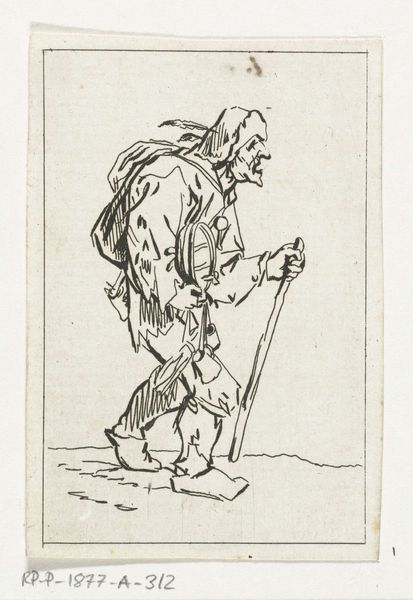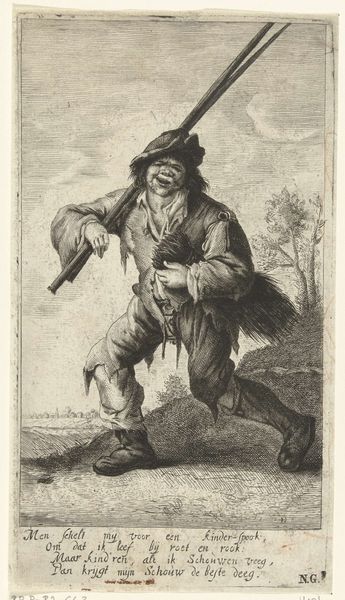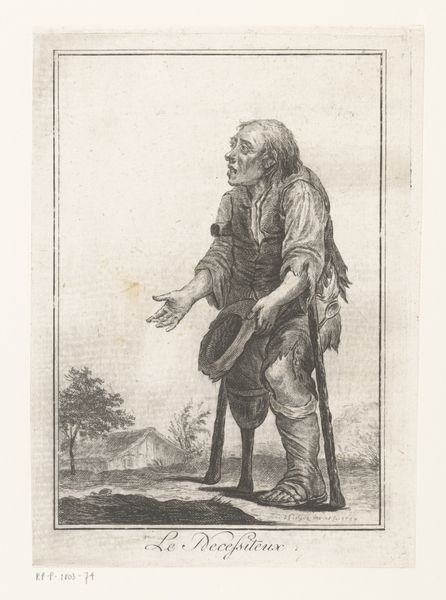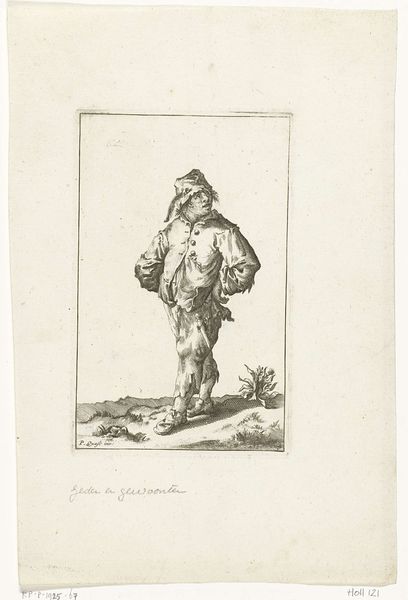
Dimensions: height 214 mm, width 156 mm
Copyright: Rijks Museum: Open Domain
Curator: Here we have a print entitled "Gebochelde man met gehavende kleding," which translates to "Hunchbacked man with tattered clothing." It dates from 1783-1784 and is currently held in the Rijksmuseum. Robert Brichet is the listed artist. Editor: He looks... well, the most striking thing is the detail rendered in what must have been the original plate! But I get the impression that we see more than an individual, his clothes speak to something socially symbolic. Curator: It is interesting to think about the materiality and the various ways prints like this could have circulated in society back then. Etching and engraving, essentially transferring an image onto a metal plate to then reproduce it on paper. This was a readily available artform for both artists and their consumers in that time. Editor: Absolutely. The fact that it's a print speaks volumes. Think of the democratizing effect of reproduced imagery! Caricatures like this, widely disseminated, fueled public opinion. Who *was* this "Martin Mequeur" depicted here? Was he a specific individual known in the community or a stand-in for a certain social class? Curator: Precisely, this could be a way to reflect upon social disparities of the time. He's got this mischievous look despite his humble apparel... One could even go as far as to see an act of rebellious resistance in it! And that's something accessible to a wide public! Editor: The lines really bring out the textures, from the rough cloth of his clothes to the crinkles around his eyes. But I am also pondering if this form of rendering adds to our reading of it as something of "low class". Curator: Consider also the tools and labour involved. Creating those fine lines in metal and the pressure of the printing press on that specific type of paper… Every stage contributed to the final appearance and therefore, how it might be viewed in society. Was he perhaps based on observation, or was the plate based on studies and then multiplied with less care? Editor: It does makes me wonder about the context. Were these prints primarily sold as individual sheets, or did they form part of a larger collection of similar social critiques? Curator: And where they mostly purchased or handed to those in high societal spheres? Or instead sold as "popular" pieces of imagery? Editor: What this reminds us is that even seemingly simple works of art like this etching can tell complex stories about power, class, and the circulation of images in society. It's definitely got my thoughts moving around the act of both production and reception of it! Curator: I agree. It certainly gives you a lot to think about what it meant to produce art and view art during that era.
Comments
No comments
Be the first to comment and join the conversation on the ultimate creative platform.


